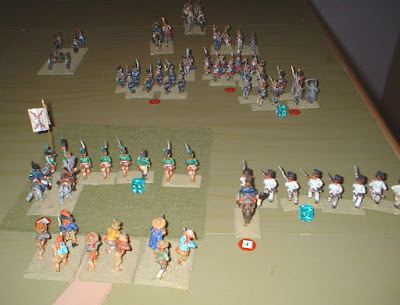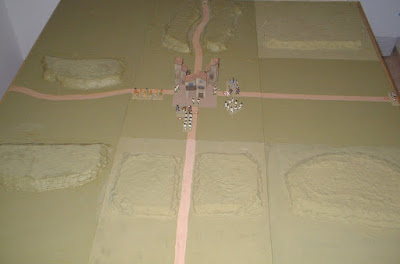
General
This campaign is part of the larger 1813 Campaign. It covers the period 14 May to 7 June 1813 and the fighting in eastern Spain between Fourth French Army and the Spanish. It has been done as a separate blog in order to keep all of the relevant reports together and to avoid making the main campaign blog too long and complicated.
If you want to read about the main campaign it can be found at:
http://1813campaign.blogspot.com.
Summary of the Campaign
Wellington is commander in chief of the British, Portuguese and Spanish armies. He has concentrated the British and Portuguese army at Salamanca, ready for the main effort against Burgos to clear the French from all of Spain.
He is anxious that the Marshal Suchet in eastern Spain should not send support to Marshal Soult at Burgos, and to this end has tasked the Spanish armies in eastern Spain to create a diversion to occupy Suchet.
The French occupy the coastal area from the French border to Barcelona to Tarragona.
Captain-General Copons commands all Spanish troops in eastern Spain. He orders the occupation of Lerida to draw French troops into the mountains west of the coast. Whilst they are so engaged, he moves to take Tarragona.
The French garrison deploy at Rues to protect the city and their lines of supply to Barcelona. The French hold Rues, but are unable to defeat the two Spanish armies and retire into Tarragona.
Having entered Lerida to the west, the French become aware of the threat to Tarragona and immediately march through the mountains to raise the siege. The Spanish attempt to stop them at Prades but are defeated and the siege of Tarragona raised.
By now all three French corps are concentrated near Tarragona, and Suchet is determined to destroy the Spanish. His first attempt is at Cambrils, where he attempts to stop them from retreating south to the safety of the river Ebro. He fails, but he cuts off half of the Spanish army.
He allows the Spanish to unite in order to defeat the entire army and this results in the second battle of Cambrils. The French win an inconclusive victory, but the Spanish are allowed to retire behind the river Ebro.
By now there is considerable disruption to the French lines of communication back to France, and Suchet has to take one corps back to Barcelona to reopen them.
The Spanish are quick to take advantage, and again move west of the river Ebro.
At the end of the campaign the French still hold Barcelona, Lerida and Tarragona. However the Spanish have isolated all three centres and disrupt all communications between them.
Captain-General Cupons has achieved his campaign objective of preventing Marshal Suchet from sending any support to Marshal Soult at Burgos. And at the end of the campaign the Spanish occupy more ground than at the start.
























